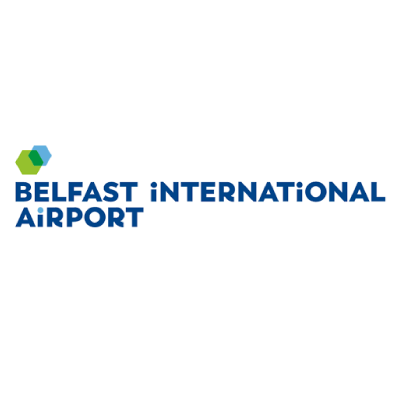There are currently 2.5 quintillion bytes of data produced every day. Actually, there are probably more, because this figure dates from 2017 and the digital landscape just keeps on growing. In fact, over 90% of all the data in the world was generated in the last two years. To understand the magnitude of these numbers, it might help to visualise that one ‘quintillion’ is represented by a 1 followed by 18 zeros. That’s a lot of data.
This boom in data has brought with it certain challenges, not least how to optimise the potential of all this information. However, conditions are favourable for airports as ‘connected’ travellers rely more than ever on mobile phones. According to researchers at India’s Amrita School of Engineering, the average transatlantic flight generates about 1,000 gigabytes of data, the equivalent of around 2,000 hours of CD-quality recording. The key to an airport’s long-term success in terms of operational efficiency and market-leading customer service lies in the ability to harness this data in the right way.
When an airport uses the right data with the right insights, it becomes possible to eliminate pain points for travellers. Data offers a competitive edge, supporting brand loyalty, improving customer satisfaction and building sustainable profitability.
In the Passenger Experience & IFEC Advisory Report produced ahead of the 2018 World Aviation Festival, Joe Leader, CEO of the Airline Passenger Experience Association (APEX) stressed the importance of data capture and analytics for airports:
“We need to be operating at the level of Google. For every passenger, we know every detail that serves as a marketing treasure trove of personalisation. We have full names, address, exact birthdays, seat assignments, credit cards and everything that should make personalisation easy.”
Data analytics and ‘insight’
Good quality data analytics provide benefits throughout the airport ecosystem, but analytics relies on a combination of the data itself and the way that data is processed. It’s only when data is used in a contextual, industry-specific (or even ‘airport-specific’) way that valuable, actionable insights are created.
For example, long queues within the airport are often cited as a frustration for air travellers. By processing the data of passengers coming through the terminal, it becomes possible to use analytics to predict spikes in traffic at gates and security, and to predict when these peak times will occur. This means the airport can allocate sufficient resources, which means an easier customer journey through the terminal and a better customer experience. It also allows the airport to predict low-traffic periods and allocate resources appropriately, thereby not wasting money.
It’s also a question of seeing the passenger experience holistically: If a passenger spends less time in the security queue, there is more opportunity to enjoy the duty free shops and food and beverage concessions before the gate call.
This is where analytics gets interesting. Advanced analytics and machine learning make it easy to understand individual passengers and their shopping and browsing behaviour. Travellers who are interested in paying for ancillary services become identifiable. If a repeat customer normally visits a particular dining concession, they can be tempted with discounts and special offers based on their preferences: Give them a voucher for the kind of meal they want. This develops customer loyalty and retention as well as new chances to generate revenue.
Writing for aviationpros.com, Dheeraj Kohli, Vice President and the Global Head of Travel and Transportation explains:
“The bottom line is clear: in order to keep up with these changes, airports must now treat customer behaviour insight as a primary resource for gaining a differential edge in the market.”
Bad data = poor vision
Insight starts with data. It’s impossible to generate meaningful insights from poor quality data. It’s probably not overly dramatic to say that using bad data can be damaging, yet according to Experian’s 2018 Digital Marketer Report, 45% of marketers believe that their current customer data is incomplete or of poor quality. This means that almost half of all businesses are relying on ineffective data to inform their most important decisions. Take into account the fact that any data-reliant team or process is only as efficient as the data from which it works, and it becomes easy to see how vital data is to the entire structure of a business.
Experian’s figures show that on average, organisations believe that 30% of their data is inaccurate. This is significant enough to block the delivery of excellent customer service, and that has implications across the board.
Ensuring your customer data is fit for purpose
Experian recommends an initial data cleanse, then setting up contact validation tools at point of capture to make sure any new data is accurate. It should be an ongoing strategy to keep your customer records up-to-date and accurate. By prioritising data quality in this way the airport can confidently target the right people with the right offers, nurturing long-term relationships with its passengers.
Gathering quality data
The benefits of analytics are clear, but let’s take a look at how the data is gathered. This is where the Internet of Things (IoT) comes into play. The IoT is the “network of devices such as vehicles and home appliances (or at the airport, customer information points and RFID) that contain electronics, software, sensors, actuators, and connectivity which allows these things to connect, interact and exchange data” (Wikipedia). IoT relies on three fundamental components:
- The device
- Sensors/Internet access that enables connectivity
- Analytics resulting from the generation of data
When a passenger uses his or her smartphone to connect to the Wi-Fi network at the airport, Internet access makes it possible to communicate that person’s data to the airport. However, this data is only useful if the airport is able to make it actionable: Can it be used to alter the engagement and relationship between airport and customer?
By connecting with passengers directly through their personal mobile device, the airport creates a channel by which it can communicate with customers, either using push notifications or mobile apps. This means that the airport can provide information such as gate number, travel times, shuttle journeys, special offers for parking and on-site concessions and weather at the destination, meaning that passenger can enjoy a frictionless journey.
Where does the data come from?
Data can be collected from airport passengers at many points in the customer journey, but many airports are still losing out to third party car park operators and comparison sites.
The most significant way to improve customer experience is to get to know the passenger, yet this has been a sticking point for airports. By implementing an integrated booking solution like Rezcomm (the world’s first combined ecommerce platform for airports) the airport can offer flights, parking and a raft of other services directly through its website. Passengers gain a one-stop-shop where they can purchase all the travel products and services they need, and the airport gains a sophisticated solution through which it can monitor, manage and maximise revenue streams. As a result, the airport realises the potential to build its own customer base and to follow in the footsteps of the most successful ecommerce businesses when it comes to operational efficiency, customer satisfaction and revenue growth.
As each website visitor converts, signing up to hear about new routes, joining a loyalty programme or making a booking, their data is automatically added to a secure Cloud-based CRM system. There will be no more anonymous customers: And this is where it gets exciting, because this is the point at which data can be turned into valuable, actionable insight.
While analytics will itself provide the first piece of the puzzle, it is also essential to have deep contextual knowledge in understanding how and when each piece of data must be considered. This comes from business experience, knowledge of the industry and an appreciation of how insights can help airports achieve their business goals.
The insights available with an industry-specific solution are frankly better than they would be from a generic CRM. When you consider that Rezcomm has many years of experience working with airport partners and access to insights from over a quarter of a billion passengers worldwide, it makes sense that the analytics and insights will generate the sort of information that really helps airports to excel.
Personalisation as a driver for data
One relevant and easily grasped aspect of insight-driven marketing is personalisation. It’s clear that this is an important part of delivering an engaging customer experience, and most marketers use personalisation to some extent in their email campaigns. However, just like poor data, inconsistent or ‘wrong’ personalisation can actually detract from the customer experience: It must be consistent in order to work. This requires passenger insight to be applied to the airport’s entire marketing strategy rather than the tactical application of insights for each channel in isolation.
The value of visualisation
Rezcomm delivers, stores and segments the in-depth data your airport demands, and the analytics that come with Rezcomm’s platform are tailor-made for the industry. A simple, intuitive dashboard makes it easy to see real-time insights into aspects that inform vital business decisions. These might be anything, from marketing insights and peak car parking demand to the results of split testing or website CTAs, most popular products and flexible tariffs.
All the reports are presented in a way that enables clear visualisation of positives and pain points, taking the guesswork out of ecommerce for airports. For example, when managing the on-site parking inventory, the back end system offers essential tools to facilitate improvement to the airport’s online financial performance through use of industry-standard yield management.
Real time monitoring of current occupancy, forecasted vehicle movements, movement reports and ‘no shows’ are standard functionality for Rezcomm. Available space is shown in real time via a one-page dashboard, allowing the airport to see the current situation at a glance, and to respond and plan accordingly.
Data insights and air travel
The data that the airport receives through channels including direct bookings and Wi-Fi sign-up is incredibly valuable. It allows for a seamless passenger experience and for personalisation of services to really add value to the individual customer. The key to realising the potential of this data comes from focusing in on actionable insights, cutting out the noise created by the sheer volume of data, and honing in on what it means in an operational, service and customer satisfaction context.
This is where Rezcomm can offer a guiding hand for airports wanting to navigate the challenges and possibilities that come with data. Predictive analytics represents an exciting trend for airports, determining individual customers’ spending habits. The key is to harness this knowledge by establishing a data based platform that makes it possible to visualise the data and use it to improve operations and services throughout the airport ecosystem. Then, as they say, the sky’s the limit.
To find out more about Rezcomm and how we can help to deliver and optimise the in-depth data your airport needs, contact the team today.






























